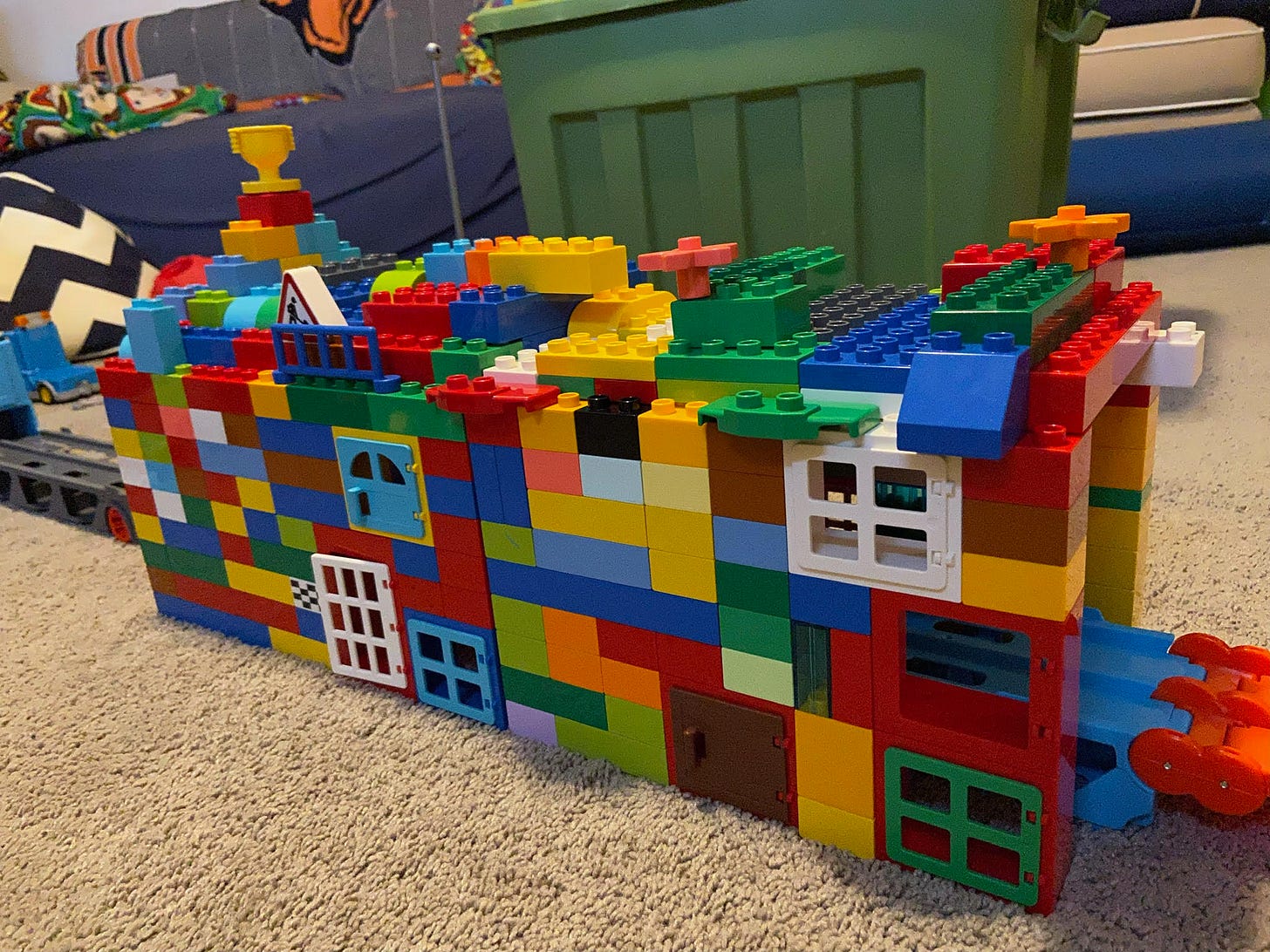As a kid, I was obsessed with legos. In particular, the lego sets that came with extensive instruction booklets, which allow you to build anything from the launch pad at Cape Canaveral to the Lincoln Memorial in Washington, DC.
I remember spending hours working on them, perfecting every last detail, and then proudly adding them to a shelf in my room, there to sit, and gather dust for the next 30 years, until the day my parents packed them up and brought them to my own house (along with my grade school yearbooks and G.I. Joe action figures).
I admit I’m just as obsessed with legos today as I was all those years ago, but for completely different reasons. While it was fun to assemble something impressive and take the time to follow step-by-step instructions, to create something cool to add to my lego trophy case, I’ve since learned that the true joy that comes from these colorful bricks, is the endless possibilities they allow, the fleeting moments of their completed state, and the second life they are granted merely seconds later.
In a way, legos reflect daily life (especially daily life with kids).
The sky (or the basement ceiling) is the limit.
Legos, like kids, start out as these tiny, oddly shaped pieces of nothing, that can be turned into something spectacular (or precarious) in no time at all. Often, the first goal is to build up. Kids aspire to grow up (typically to “be taller than Daddy”) but nature is cruel, only offering them the ability to grow a few inches per year. Legos can reach the ceiling within a matter of seconds, which if you ask most parents, is exactly how quickly their 8-year-old just grew out of their last pair of sneakers.
As fast as they grow up, they can (and will) fall down.
Last week I was part of a construction crew that built a (far-from-code) tunnel over a Hot Wheel track. If you breathed on it, or simply looked at it funny, it would come crashing down, and all of that hard work would have felt as if it had been done for nothing. Likewise, you can spend years telling your kids to be good people. To share. To use manners. To not be a$$holes. But no matter how hard you work at it, it will never take much for that lego tunnel to collapse. And when it does, chances are your perfect little protege will slug his older brother, call his sister a poopy-head, take his toys and storm off.
They always get a second chance.
When the aforementioned Hot Wheels tunnel finally did topple over, the first instinct was to rebuild. But given that version 1.0 was an original, built without instructions, using parts never intended to support transportation infrastructure, version 2.0 ended up looking slightly different. Of course, since its predecessor was not long for this world, the fact that version 2.0 deviated slightly in design, allowed the engineers the opportunity to improve. Stronger footings were added, trusses were reinforced, and emergency exits were added so that casualties were minimal if and when a second collapse occurred.
Likewise, when kids melt down, it provides us, parents, with a unique opportunity to learn from our own mistakes. To fix the flaws in our initial approach. To add support, as well as the ability to tap out when needed.
Sometimes, at the end of a long day, I wonder why my house is filled with so many legos (or kids). It feels like I’m always picking them up, putting them away, or finding one buried in the couch cushions. But then I remember that within the blink of an eye, those “oddly shaped pieces” will one day be taller than me, so best to ensure the foundation is strong.



